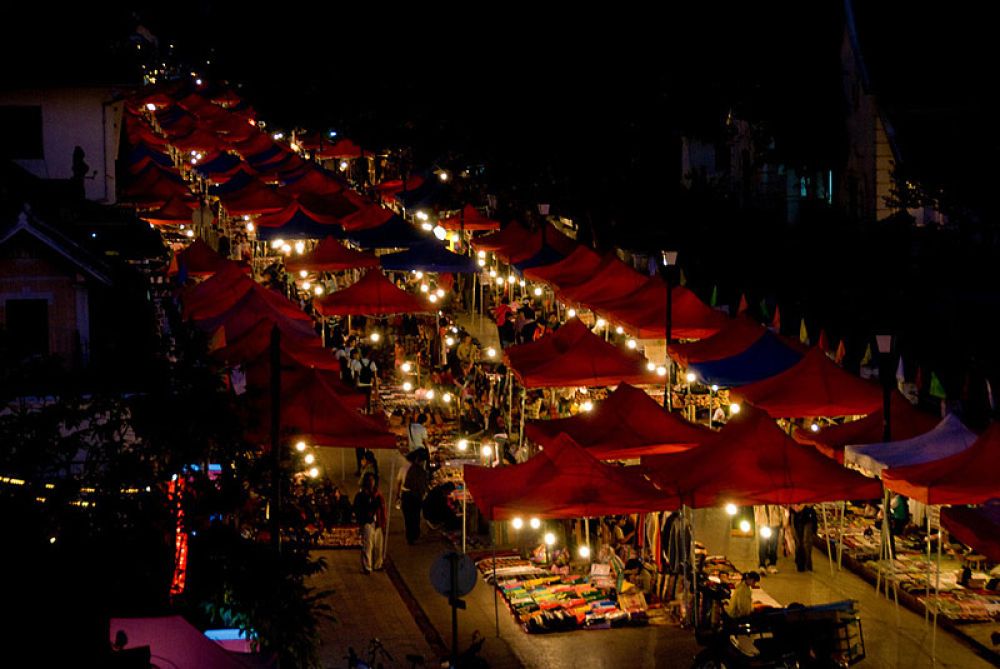

The former capital of the Kingdom of Laos, Luang Prabang, is known for its well-preserved architectural, religious, and cultural heritage, earning itself a designation as a UNESCO World Heritage Site in 1995. This distinguished recognition boosted tourism significantly, placing Luang Prabang on the map as a must-visit destination in Southeast Asia.
Night markets in Southeast Asia have a storied history, deeply rooted in the local tradition of community and commerce. In Luang Prabang, the night market has become a quintessential part of the daily social fabric since it opened. The market was initially a place for locals to trade goods but rapidly gained popularity among tourists looking for authentic, handcrafted Lao products.
The burgeoning tourist influx transformed the market experience dramatically. What began as a local shopping venue gradually evolved into a vibrant nocturnal attraction. Artisans from nearby villages soon recognized the burgeoning market as an opportunity to reach a wider audience, and by showcasing crafts such as textiles, jewelry, and traditional Lao artwork, the Night Market became a focal point for cultural exchange as well as commerce.
Tucked along Sisavangvong Road in the town center, the Night Market is alive with colors and fragrances each evening. As the sun sets, the street becomes a pedestrian-only thoroughfare. Vendors set up their stalls in a ritualized parade of umbrellas and mats, presenting an array of traditional goods, from silk scarves to handmade soaps. Tourists are encouraged to practice their bargaining skills, but it is the quality and uniqueness of the products that stand out.
In recent years, eco-tourism and sustainable travel have become increasingly significant, and the Night Market is no exception. Vendors are more frequently offering products made from sustainable materials, and there is an emphasis on supporting local communities. Tourists are seeking authentic experiences, and the Night Market's ability to offer this while encouraging responsible tourism practices has only enhanced its reputation.
Like many destinations worldwide, Luang Prabang felt the impact of events that constrained global travel. The recent pause in travel due to the pandemic allowed for a period of introspection, both for the market's vendors and the town's stakeholders, considering ways to preserve the market's authenticity while preparing for a resurgence in tourism.
For those planning to visit the Night Market, it operates daily from approximately 5:00 PM to about 10:00 PM. It offers not only souvenirs and handmade crafts but also a chance to sample local Lao cuisine. For an enriched experience, tourists are often advised to engage with the vendors, learning the stories behind their wares, and the traditions they uphold.
The Night Market in Luang Prabang is more than just a shopping destination; it is a cultural tapestry and a nightly festival that celebrates the Lao people's craftsmanship and way of life. As tourism trends evolve, the market continues to adapt, promising visitors an authentic slice of Lao culture that's both historical and vibrantly current.